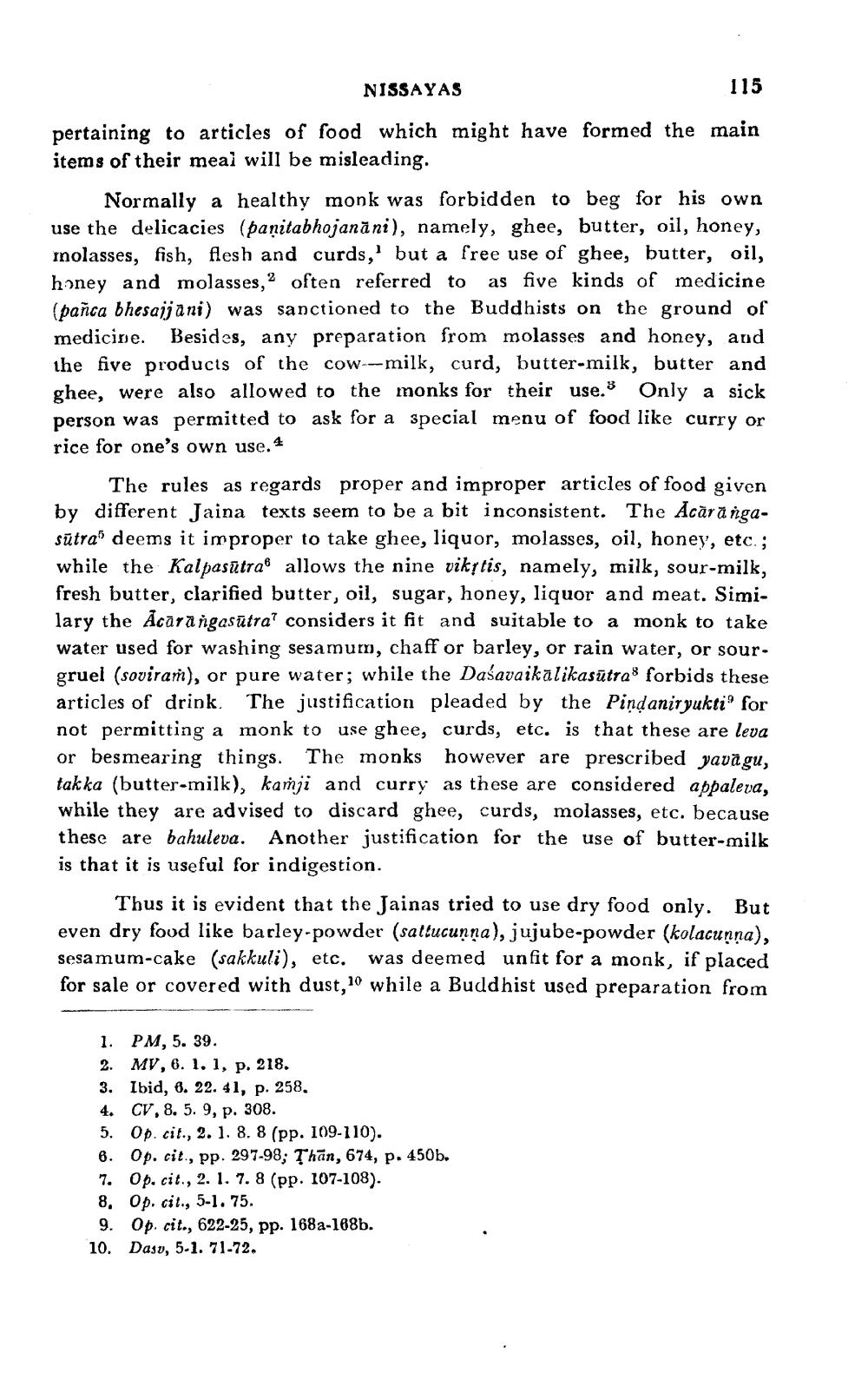________________
NISSAYAS
115 pertaining to articles of food which might have formed the main items of their meal will be misleading.
Normally a healthy monk was forbidden to beg for his own use the delicacies (panitabhojanāni), namely, ghee, butter, oil, honey, molasses, fish, flesh and curds, but a free use of ghee, butter, oil, honey and molasses, 2 often referred to as five kinds of medicine (pañca bhesaijani) was sanctioned to the Buddhists on the ground of medicine. Besides, any preparation from molasses and honey, and the five products of the cow-milk, curd, butter-milk, butter and ghee, were also allowed to the monks for their use. Only a sick person was permitted to ask for a special menu of food like curry or rice for one's own use. 4
The rules as regards proper and improper articles of food given by different Jaina texts seem to be a bit inconsistent. The Acara nga. sūtra deems it improper to take ghee, liquor, molasses, oil, honey, etc.; while the Kalpasūtrae allows the nine vikytis, namely, milk, sour-milk, fresh butter, clarified butter, oil, sugar, honey, liquor and meat. Similary the Acāra ngasūtra? considers it fit and suitable to a monk to take water used for washing sesamum, chaff or barley, or rain water, or sourgruel (soviram), or pure water; while the Dasavaikalikasūtras forbids these articles of drink. The justification pleaded by the Pindanir yukti" for not permitting a monk to use ghee, curds, etc. is that these are leva or besmearing things. The monks however are prescribed yavägu, takka (butter-milk), kamji and curry as these are considered appaleva, while they are advised to discard ghee, curds, molasses, etc. because these are bahuleva. Another justification for the use of butter-milk is that it is useful for indigestion.
Thus it is evident that the Jainas tried to use dry food only. But even dry food like barley-powder (sallucunna), jujube-powder (kolacunna), sesamum-cake (sakkuli), etc. was deemed unfit for a monk, if placed for sale or covered with dust, 10 while a Buddhist used preparation from
1. PM, 5. 39. 2. MV, 6. 1. 1, p. 218. 3. Ibid, 6. 22. 41, p. 258. 4. CV, 8. 5. 9, p. 308. 5. Op.cit., 2. 1. 8. 8 (pp. 109-110). 6. Op. cit., pp. 297-98; Thān, 674, p. 450b. 7. Op. cit., 2. 1. 7. 8 (pp. 107-108). 8, Op. cit., 5-1. 75.
9. Op. cit., 622-25, pp. 168a-188b. 10. Dasv, 5.1. 71-72.




